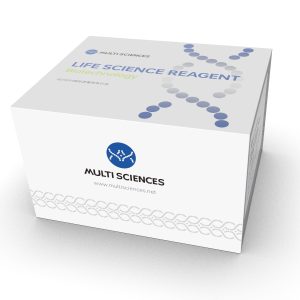HGNC ID: 2367
Target Abstract:
C-reactive protein (CRP) is a cyclic, pentameric protein found in plasma. The liver can synthesize CRP in response to factors released by macrophages and adipocytes. CRP is a liver derived acute protein that increases after macrophages and T cells secrete interleukin-6. Its physiological function is to bind to lysophosphatidylcholine on the surface of dead or dying cells (and certain types of bacteria) to activate the complement system through C1Q complexes. It is not related to C-peptide (insulin) or protein C (coagulation). CRP is usually used as an inflammatory marker, and its level increases when the body is infected with inflammation. Recent studies have shown that patients with a higher basic level of CRP are usually accompanied by a higher incidence of diabetes, hypertension and cardiovascular disease
CRP Target Infomation Overview
- Target Symbol: CRP, C-reactive protein
- Gene Groups: Short pentraxins
- Alias: PTX1
- Alias Names: pentraxin 1; C-reactive protein, pentraxin-related
CRP, C-reactive protein Target Infomation by Species
- Human
- Mouse
- Rat
Human CRP Target Information
- Target Symbol: CRP, C-reactive protein
- Alias:
- C-reactive protein, pentraxin-related
- c-reactive protein, petaxin related
- MGC149895
- MGC88244
- pentraxin 1
- PTX1
- NCBI_Gene: 1401
- UniProtKB: P02741
Human CRP Predicted Functions
Enables several functions, including complement component C1q complex binding activity; low-density lipoprotein particle binding activity; and low-density lipoprotein particle receptor binding activity. Involved in several processes, including negative regulation of macrophage derived foam cell differentiation; positive regulation of superoxide anion generation; and regulation of gene expression. Acts upstream of or within vasoconstriction. Located in extracellular space. Implicated in several diseases, including Kawasaki disease; autoimmune disease (multiple); macular degeneration (multiple); middle cerebral artery infarction; and nephritis (multiple). Biomarker of several diseases, including artery disease (multiple); auditory system disease (multiple); autoimmune disease (multiple); eye disease (multiple); and lung disease (multiple).
Mouse Crp Target Information
- Target Symbol: Crp, C-reactive protein, pentraxin-related
- Alias:
- AI255847
- expressed sequence AI255847
- NCBI_Gene: 12944
Mouse Crp Predicted Functions
Predicted to enable several functions, including cholesterol binding activity; complement component C1q complex binding activity; and low-density lipoprotein particle binding activity. Predicted to be involved in several processes, including complement activation, classical pathway; regulation of gene expression; and regulation of superoxide anion generation. Predicted to act upstream of or within vasoconstriction. Predicted to be located in filopodium and growth cone. Predicted to be active in extracellular space. Is expressed in embryo and liver. Human ortholog(s) of this gene implicated in several diseases, including Kawasaki disease; autoimmune disease (multiple); macular degeneration (multiple); middle cerebral artery infarction; and nephritis (multiple). Orthologous to human CRP (C-reactive protein).
Rat Crp Target Information
- Target Symbol: Crp, C-reactive protein
- Alias:
- Aa1249
- Ab1-341
- Ab2-196
- Ac1-114
- Ac1262
- Ac2-069
- Ba2-693
- C-reactive protein member of the pentraxin family
- C-reactive protein, member of the pentraxin family
- C-reactive protein, pentraxin-related
- C-reactive protein, petaxin related
- NCBI_Gene: 25419
-
- UniprotKB: A0A0G2K8V5
- UniprotKB: H6X2V2
- UniprotKB: H6X2V3
- UniprotKB: H6X2V4
- UniprotKB: H6X2V7
- UniprotKB: H6X2V8
- UniprotKB: H6X2V9
- UniprotKB: H6X2W0
- UniprotKB: H6X2W1
- UniprotKB: H6X2W2
- UniprotKB: H6X2W3
- UniprotKB: H6X2W4
- UniprotKB: H6X2W5
- UniprotKB: H6X2W6
- UniprotKB: H6X2W7
- UniprotKB: H6X2X0
- UniprotKB: P48199
- UniprotKB: Q63133
- UniprotKB: Q63134
Rat Crp Predicted Functions
Enables cholesterol binding activity; identical protein binding activity; and low-density lipoprotein particle binding activity. Involved in several processes, including cellular response to nitric oxide; complement activation, classical pathway; and negative regulation of superoxide anion generation. Located in extracellular space; filopodium; and growth cone. Used to study rheumatoid arthritis. Biomarker of several diseases, including acute kidney failure; artery disease (multiple); iron deficiency anemia; obesity; and status epilepticus. Human ortholog(s) of this gene implicated in several diseases, including Kawasaki disease; autoimmune disease (multiple); macular degeneration (multiple); middle cerebral artery infarction; and nephritis (multiple). Orthologous to human CRP (C-reactive protein).

